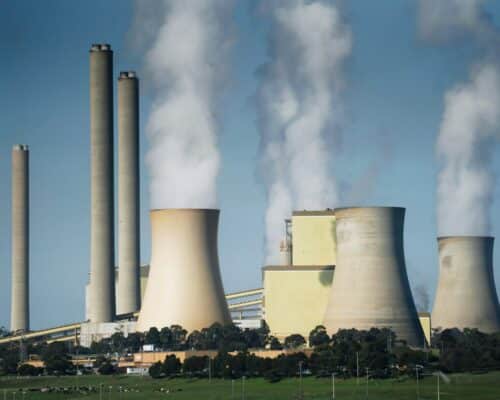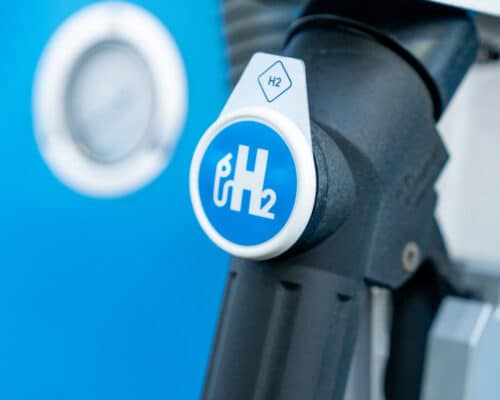Malaysia’s Energy Transition: Challenges and Opportunities
12 June 2024 – by Viktor Tachev Comments (0)
In the upcoming decades, the growing population and flourishing economy of Malaysia will significantly increase its energy consumption and demand. The quickly depleting oil and gas reserves mean the country has two choices. It can either lock itself into a future of fossil fuel import dependency or opt for more secure and affordable clean energy sources to meet its long-term electricity generation and climate goals.
Malaysia’s Energy Mix in 2024 – Statistics
IRENA’s Malaysia Energy Transition Outlook report notes that for the past decade, fossil fuels have had a 95% share in the Malaysia’s energy mix. The IEA also gives similar estimates. According to Global Data, coal, oil and gas account for 75% of the country’s current power mix.
As of 2024, IRENA notes renewables account for just 5% of Malaysia’s energy mix. Hydropower and solar make up the majority. However, according to government data, as of the end of 2020, renewable energy sources accounted for 23% of national power.
Malaysia Energy Transition Roadmap
Malaysia’s energy transition roadmap marks a significant shift towards a more sustainable and clean energy future. With the government’s commitment to reducing carbon emissions and increasing the share of renewables in its energy mix, there is a growing opportunity for innovative solutions and technologies to thrive in the market. The roadmap highlights the potential for Malaysia to become a regional leader in clean energy production, attracting investment and fostering economic growth.
Malaysia’s Current Climate Policies and Net-zero Goals
Malaysia’s nationally determined contribution (NDC) targets include an unconditional reduction in emissions intensity of 45% by 2030 compared to 2005. The country aims to achieve net zero by 2050.
Its latest National Energy Policy (NEP), introduced in September 2022, lines up the following targets for 2040 compared to 2018:
- increasing the total installed capacity of renewables from 7.6 GW to 18.4 GW,
- the overall share of clean energy in the total primary energy supply to jump from 7.2% to 17%,
- reducing coal capacity from 31.4% to 18.6%,
- increasing the EV share in the national fleet from under 1% to 38%,
- increasing energy self-sufficiency from 48% to 72% and
- utilising LNG as an alternative fuel for 25% of marine transport.
By 2040, the NEP targets that the use of natural gas, oil and coal will drop by 39%, 27% and 17%, respectively. Meanwhile, the use of renewable energy is expected to rise. Solar will make up 4% of the energy mix, while hydropower will rise to 9% from its current 6%, and bioenergy will increase to 4% – up from 1% in usage.
However, according to analysts, the country needs to catch up on its renewable energy targets, which puts its climate targets at risk.
IRENA warns that Malaysia would need more ambitious targets to align with a 1.5°C-compatible scenario. It says that by 2030, solar PV alone, for example, would have to scale up to 17.1 GW in capacity. By 2050, renewables must have a 90% to 100% share of the country’s total electricity supply.
Malaysia’s Renewable Energy Potential
Malaysia’s geography presents both advantages and challenges for harnessing renewable energy.
The conditions are unfavourable for wind power development, for example, as the country is located in an area with low wind speeds of around 2 m/s. However, they can get up to 11 m/s in higher-altitude areas. Studies estimate the maximum wind power potential in the country at between 500 MW and 2 GW.
On the other hand, Malaysia has great potential for biomass, hydropower and solar energy. During most of the year, Malaysia has at least 12 hours of sunlight and high solar irradiation. In fact, its solar power conditions are some of the best in Southeast Asia (SEA), as it is located near the equator.
According to IRENA, Malaysia has the potential to install 153 GW of solar energy by 2050, supported by 782 GWh of storage. Tapping into this potential will help Malaysia reach its renewable targets.
The Benefits Of Capitalising on Renewable Potential
Prioritising solar energy, wind, hydropower and green hydrogen technologies could reduce energy-related emissions by as much as 60%. On top of that, the country could save up to USD 13 billion annually in avoided cumulative energy, climate and health costs and a phaseout of fossil fuel subsidies.
For investors in clean energy projects, Malaysia can potentially become an attractive destination. According to the IEA, investment risks are low. Furthermore, the government is actively working to increase the support for project financiers by introducing policies that constitute a more favourable investment environment, like feed-in tariffs. Currently, the electricity price for businesses is the second-lowest in SEA, only behind Indonesia’s.
While pursuing a 1.5°C-compatible scenario might require a large amount of financing initially, IRENA notes that when fuel, operations, maintenance, financing costs and externalities are taken into account, investment would result in lower overall energy system costs and reduced external costs.
A Mordor Intelligence market report finds that the renewable energy market in Malaysia will grow with a CAGR of 8.5% per year between 2022 and 2027. Furthermore, Malaysia is rich in raw materials and is now among the leading solar power module manufacturers.
Existing Challenges
The clean energy market in Malaysia’s energy sector is still in its infancy and remains underdeveloped. As a result, it would need massive investment to get up and running.
According to IRENA, by 2030, Malaysia would need around USD 10.8 billion in investment for solar PV alone.
By 2050, the energy transition investment needed would amount to USD 415 billion. Around 40% of it would go towards building new renewable power capacity.
At the same time, according to the IEA, there are existing risks concerning the bankability of projects.
However, one of the key challenges is the country’s regulatory landscape, where clean energy developers still face hurdles.
How to Ensure a Swift Energy Transition in Malaysia?
The country’s existing policies and market fundamentals provide a good foundation for advancing towards its decarbonisation goals. However, IRENA sees room for improvement in various aspects. It says that the country should decrease its reliance on expensive and unreliable fossil fuels and harness the vast, untapped potential of affordable local renewables. This could save the country USD 7 billion per year and reduce the need to budget for fuel subsidies.
Meanwhile, IRENA suggests that the country should capitalise on opportunities in the building, transport and industry sectors through EV uptake, urban planning and transport regulations, as well as recycling and waste management policies – a move that is expected to significantly contribute to reducing long-term, sector-related emissions.
The organisation also recommends reducing project approval times and improving the financing landscape through new and existing mechanisms like PPAs, tariff rates and more to ease and stimulate clean energy project developers. It adds that improving infrastructure availability, accelerating grid infrastructure capacity and ensuring its stability and flexibility will help Malaysia adopt renewables at scale and connect with neighbouring countries.
Malaysia must design a transparent electricity market and launch clean energy projects successfully to build a solid track record – an issue that currently makes banks wary. Building a solid base of successfully commissioned renewable energy projects will ensure more financing and scale up local industry knowledge, positioning the country as an attractive destination for investors and project developers.
How far Malaysia will go depends on its short and medium-term actions. Fortunately, it has all the prerequisites for ensuring a swift energy transition and a more sustainable, affordable and secure energy future.
by Viktor Tachev
Viktor has years of experience in financial markets and energy finance, working as a marketing consultant and content creator for leading institutions, NGOs, and tech startups. He is a regular contributor to knowledge hubs and magazines, tackling the latest trends in sustainability and green energy.
Read more







